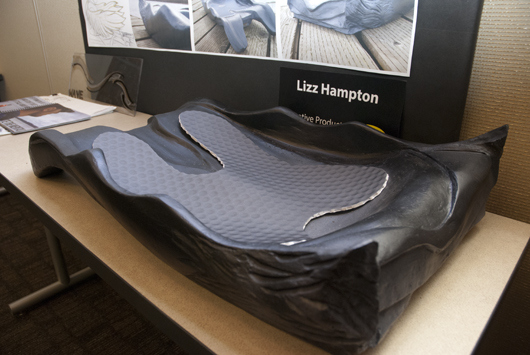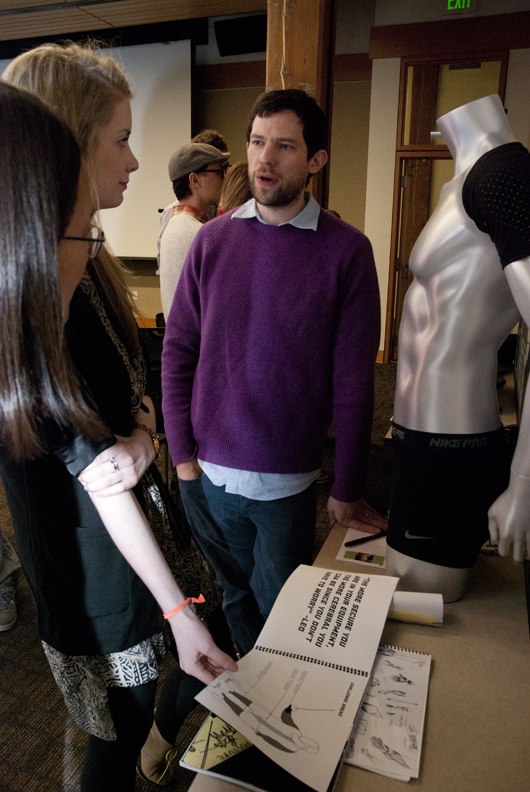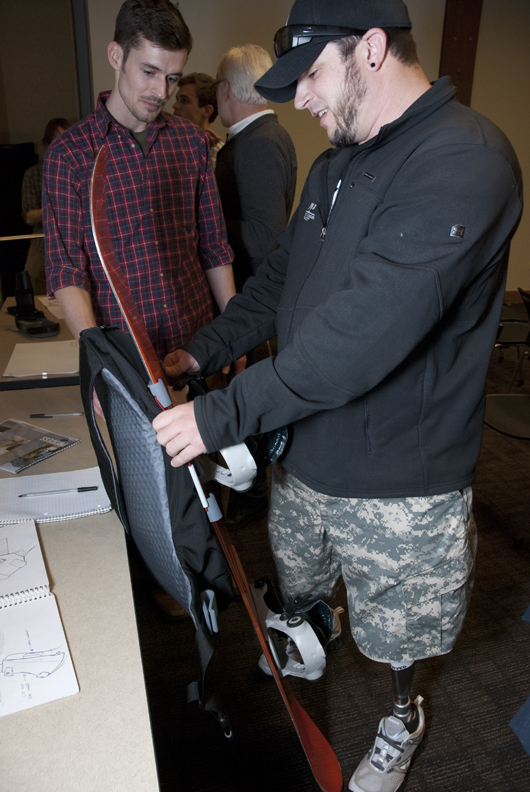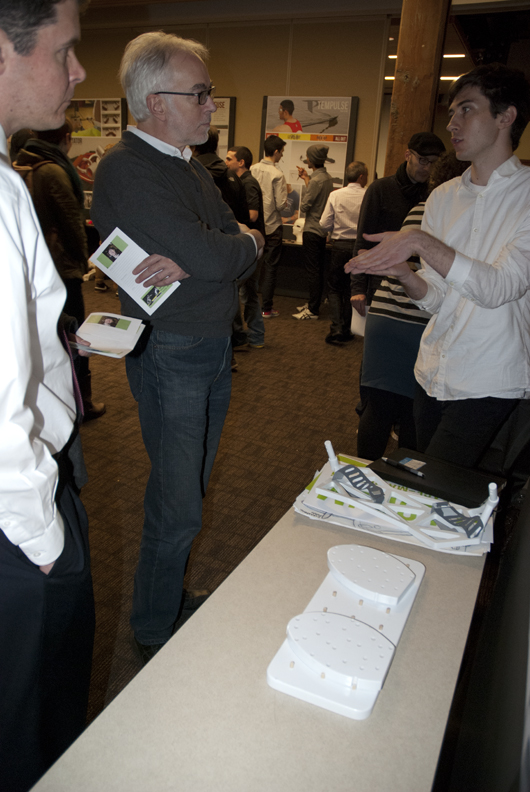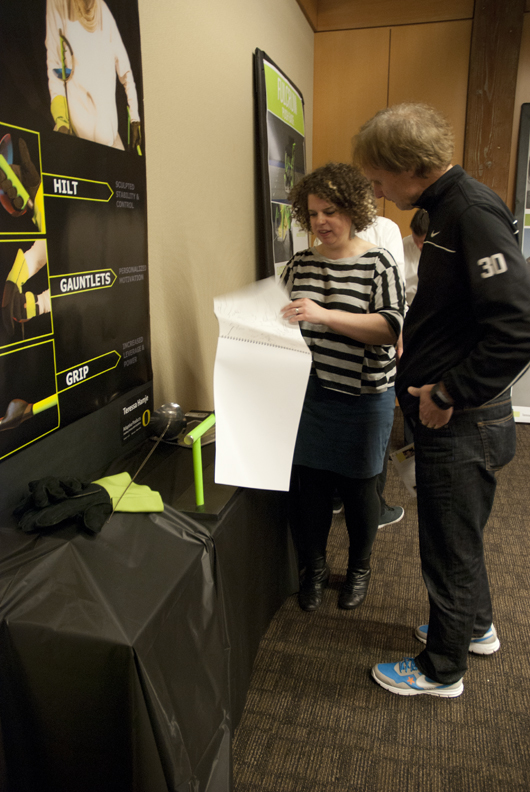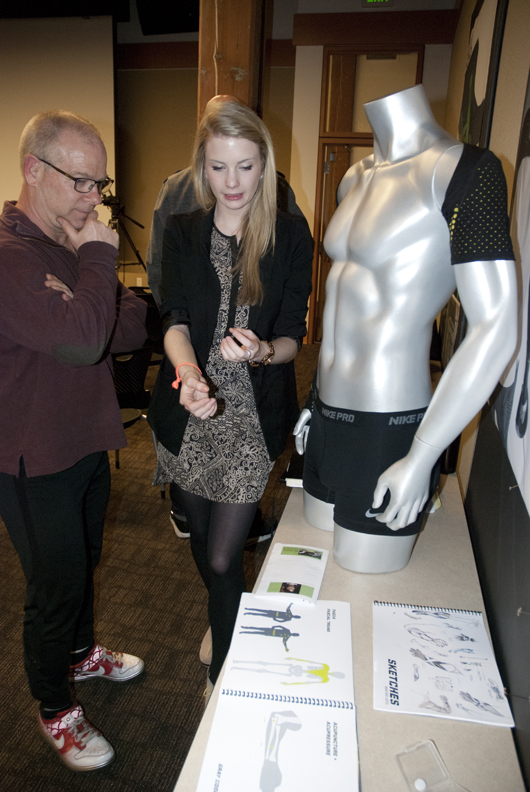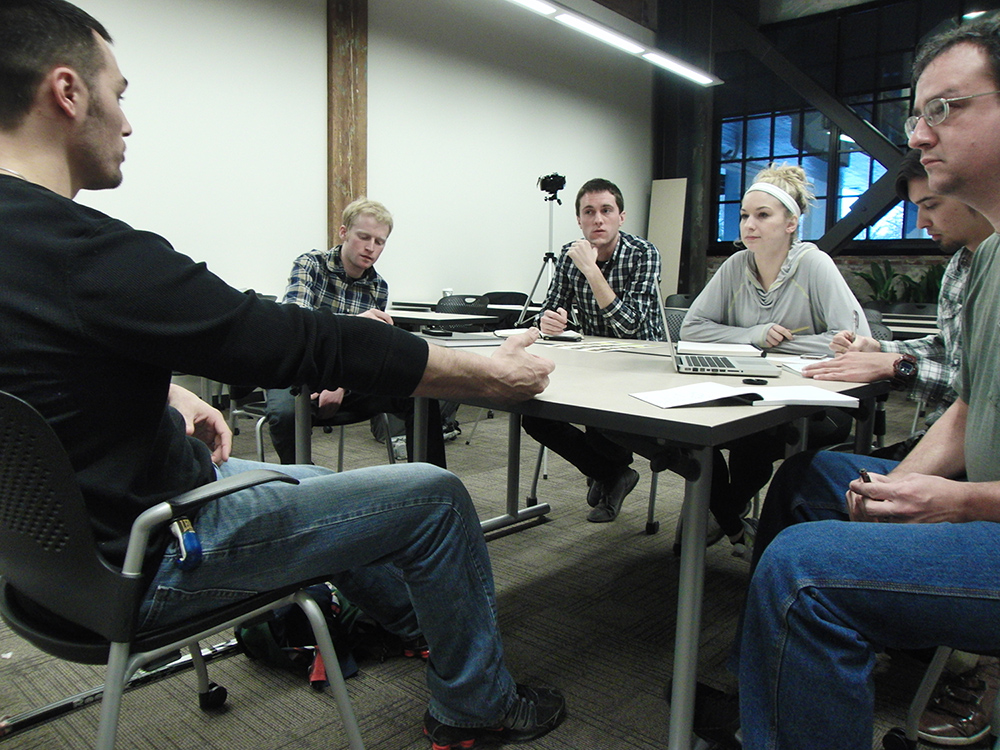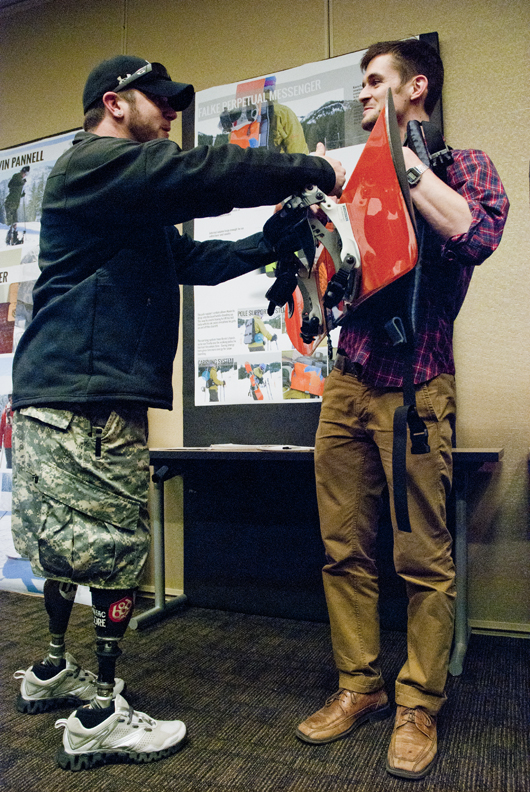
In a recent Huffington Post article, writer, film director, and activist Michael Moore posted his contentious yet well-received, “Those Who Say ‘I Support the Troops” Really Don’t.” It was a controversial and somewhat scathing look at the hypocrisy contained in rhetoric heard nationwide during these years the US has been involved with conflict in Iraq and Afghanistan.
“’I support the troops!’ spoken by Americans with such false sincerity—false because our actions don’t match our words….” wrote Moore. Strong and accusatory words, to be sure. Moore detailed about six ways Americans are, dismally failing in their rallying cry of support. One way, he claims, we fall short is in bringing “aid and comfort to the sick and wounded” veterans.
It does have a ring of truth. After all, upon their return, what do we, as citizens do to assist a veteran’s assimilation back into everyday life? These are young men and women our nation sent away to defend, protect, and serve. Many of them return not as they left. Perhaps injured, with major physical set-backs, having experienced trauma we civilians will only pretend to understand gleaned from quick snipets of war-ravaged video games where the blood and fear is only as real as the pixels on our computer screen.
Most of us, while at the prime of our life, will never have to bear the reality of losing a limb (or limbs), sustaining severe nerve damage, or living through the explosion of a roadside bomb. Saying “thanks” to these soldiers who are fortunate and brave enough to return to life in our community just does not seem enough, does it? Have we stepped up to the plate of humanitarianism and empathy and offered something really meaningful, helpful, and productive? For that matter, who, among us, offers truly helpful innovation that recognizes these wounded warriors, ignites their passions and brings them into a place where they can use everything they have in life with the greatest potential?
“Innovation happens when you don’t just confine yourself to the same standards as everyone else…..” –Tobie Hatfield, Nike, Inc.
Under the auspices of UO’s Product Design Program with program director, Kiersten Muenchinger, two University of Oregon in Portland School of Architecture and Allied Arts adjunct instructors, Wilson Smith and Bob Lucas, and with assistance from Nike’s Matt Rhoades, rose to the occasion this winter term 2013 and created that space for innovation to happen. With a combination of compassion and understanding and a determined willingness to offer mindful help, Smith and Lucas created the studio course, Adaptive Products | Enabling Athletes with Disabilities. This is the second time the studio course has been offered (the story was widely covered last year on this blog, in the Oregonian and CBS’ Smart Planet and others), this time around, the instructors decided their focus would be US veterans with athletic interests.
Smith and Lucas realized they each had a keen interest in innovating “real life” user-based studio courses. Already well-aware of the need to develop sports innovation around athletes with physical challenges, Smith and Lucas saw an opportunity to help contribute to the dreams and aspirations of the wounded veterans and, by doing so, create a program that would benefit the athletes and add to the educational experience of the UO students.
Smith and Lucas’ innovative and groundbreaking studio, Adaptive Products: Enabling Athletes with Disabilities enabled UO students to work with veterans who undaunted by their injuries and life situations, were enthusiastically pursuing rigorous athletic dreams on a professional level. It was a way to bring real-life challenges to UO in Portland students and create key opportunities to develop problem solving skills and foster empathy in design. The fundamental goal of the studio was to involve students in design team relationships with the studio work benefitting both the athletes and adding to the educational experience of the students.
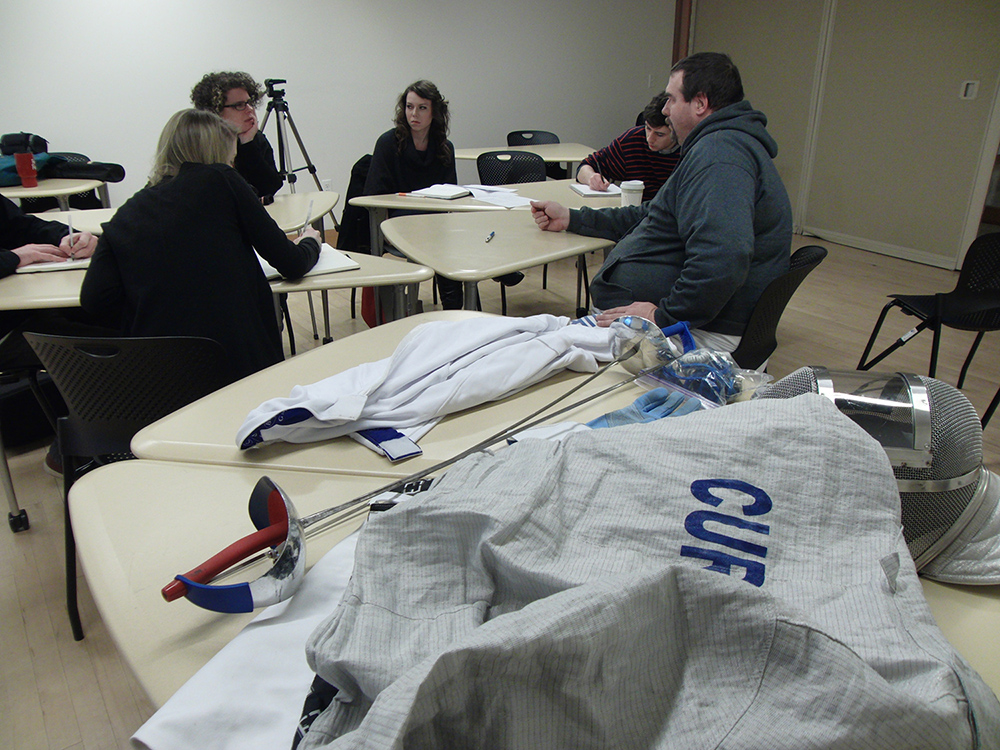
The studio allowed students to work closely with the athletes, here with Sargent Leo Curtis, wheelchair, fencer.
Combining strong backgrounds grounded in sports and design expertise, Smith and Lucas have been just the duo to accomplish this. Smith comes to the project with a longstanding history as a Nike Design Director. A UO alumus, (B. Arch. 1980), Smith is currently a Creative Catalyst within Nike’s ZOO (Special Other Operations) and has professional expertise in working to develop humanitarian aid efforts that promote and create access to sports. Bob Lucas’ career began at Nike in the footwear design and innovation field. Following 15 years at Nike, he continued in this genre becoming the Head of ait Design (adidas innovation team). His educational background includes a degree in Industrial Design. Professionally well-acquainted and united by a shared interest in health, sports and accessibility, Smith and Lucas found a strength and cooperative mission in each other’s significant accomplishments. Working together made sense and brought together years of design, leadership, and creative expertise.
To introduce students to both the innovation of design and the importance of understanding human physiology, Smith and Lucas filled the term with experiences and connections that united the students with a sense of “biodesign and bioarchitecture” [Lynette Deschler. BASECAMP3] as well as design in the athletic fields. The instructors thoughtfully included workshops and conversations with Nike, Inc. Innovation Kitchen director, Tobie Hatfield and Lynette Deschler, an expert in human architecture and biodesign and owner of BASECAMP3.
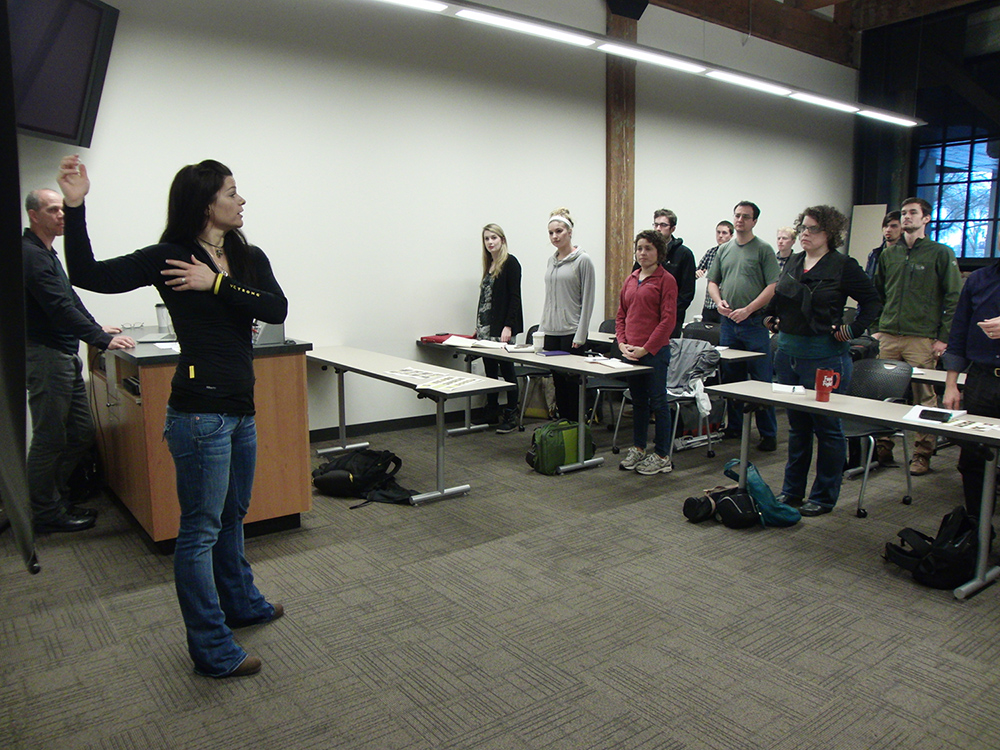
Commenting on the student work, Deschler said,
The students did an amazing job with the knowledge I shared with them and integrating it into thoughtful, creative and functional product designs that related to their athletes needs. The scope of their projects were challenging, they not only had to be introduced to the mechanics and architecture of the human body, but the specialized needs of their athletes due to combat injuries. Further, combining these performance needs with the specifications of materials, performance demands, innovative design strategy, and overall functionality. They did an exceptional job at bringing these stories to life with real performance product solutions.
I really liked working with my athlete. The dedication and power he has was really inspirational. It’s rare that you get to work with someone in school, but to work with someone who is focused and passionate was amazing. The passion elevated the whole class, and the instructors just fanned the flames. It was one of the best studios I’ve had.–Comment from Adaptive Design studio student, Mike Bartell
For the winter 2013 studio, five students were paired with each athlete. Three athletes participated in the program: wheelchair fencer Sargent Leo Curtis (working with students, Natasha Michalowsky, Rebecca Swofford, Teressa Hamje, Michael Roy, and Thane Lochtie); rower Tony Davis (working with students Michael Bartell, Elizabeth (Lizz) Hampton, Daniel Nicholson, Timothy Ploeger, Isamu Jarman); and snowboarder, Kevin Pannell (working with students Nathan G. Schultze, Nithikarn Sidthilaw, Joel Swenson, Allison Rastetter, and Tony Kan).
Athlete Profiles
Kevin Pannell, snowboarder | Story: Army specialist in Iraq. In 2004 caught in a grenade ambush in central Baghdad. Legs amputated.
Sargent Leo Curtis, wheelchair fencer | Story: On his last mission in Iraq, 2004. Upon being Heli-dropped into Fallujah, encountered an IED or “roadside bomb.” Suffered extreme nerve and tissue damage resulting in fused vertebrae, hearing and vision loss, and extensive, permanent damage to nervous system.
Anthony (Tony) Davis, rower | Story: Retired Naval Officer. Tony received an air medal for over 150 hours of combat flight time during Operation Enduring Freedom and Operation Iraqi Freedom. Upon returning home in 2005, involved in a traffic accident on Interstate-5. Broken back, ribs, collar bone, and paralyzed from waist down. Never rowed before 2009.
On March 14, 2013 at the UO in Portland’s main Event Room in the White Stag Block, the Product Design students unveiled their designs for the term-end critiques. Their audience included athletic-design greats such as Nike Air Force 1 designer Bruce Kilgore, PENSOLE’s D’Wayne Edwards, Senior Designer 2 & Design Ambassador – Adidas Innovation Team at Adidas John Acevedo, Intel’s Senior Principal Engineer and Innovation Strategist Herman D’Hooge, Nike ZOO Innovation Lead Tom Rushbrook, Nike Innovation Kitchen’s James Molyneux , and University of Oregon’s Dean of AAA Frances Bronet, UO in Portland Vice Provost and AAA Administrative Director Kate Wagle, UO Product Design Program Director Kiersten Muenchinger, and UO in Portland Department of Architecture Director Nancy Cheng.
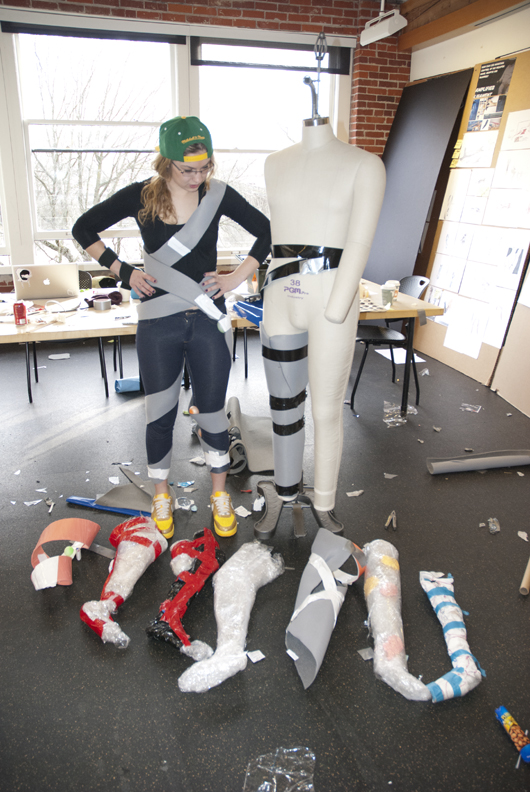
Wilson Smith kicked off the review session with a heartfelt comment, remembering the words of nationally respected UO Track and Field coach, Bill Bowerman when he said, “If you have a body, you are an athlete.” The stage was set for unveiling the innovation that could assist this new group of aspiring athletes achieve their dreams.
Each athlete had spent the previous 10 weeks working in close collaboration with the student teams. Students had attended practices, training sessions, and workouts alongside the athletes. This close contact enabled the students to observe and experience, the physical needs and equipment situations the athletes’ were dealing with. From watching the rowing technique of 2016 Para-Olympic hopeful, Tony Davis, students were able to design equipment such as a special seat that would adapt to his lower body strength and leverage issues (take, for example, an ingenious system arrived at by Daniel Nicholson that enables Davis to secure himself to his boat via a pair of shorts; or student Tim Ploeger’s “GROW” system, a precise analytical system of coaching solo training sessions).

Working with international wheelchair fencing competitor, Sargent Leo Curtis, students recognized “an area….rich for potential development…and design(s) only limited by understanding.” [student Thane Lochte] Setting out to comprehend the Sargent’s performance driven sword play as much as possible, students in this group attended weekend practice sessions and observed this athlete’s “cerebral game and unique lunging forward” as key aspects of this athlete’s technique. And while the students were quick to point out the many rules and regulations in fencing, they realized that with innovation and thought the rules and integrity could be adapted to achieve the Sargent’s ideal fencing position. With equipment that would permit the fencer to lunge forward with lightening fast speed while maintaining precision, Sargent Curtis promised to take the student designs with him on his upcoming trip to Budapest to compete in the international wheelchair fencing competition. One such design Sargent Curtis was enthusiastic to take to the international wheelchair fencing competition was the “Valhalla,” Michael Roy’s device for the wheelchair seat that exemplified the foremost body-led, performance driven pieces of the exhibited designs.
Commenting on “the inspiring bravery” of the veterans [student Teressa Hamje], the students consistently saw a need for designing equipment for Curtis, Davis, and Pannell that would be simultaneously functional and aesthetically appropriate. The athlete-veterans expressed a need for faster, better, more performance oriented systems that could be incorporated into their training and improve the existing equipment.
As the critique came to a close, and comments swirled around the room in true brainstorm fashion addressing materiality, concepts, improvements and design theory, there was one common thread heard over and over that rose above the practicality of production. Perhaps best put into words by snowboarder Kevin Pannell: Pannell who had explained his youthful voyage into the military to the students at the beginning of the term with a bluntly self-aware realism, “I [was] a country-ass white boy from Arkansas and the Army was offering to pay me to play with guns…” had a new focus. This time it was not guns that were being put into his hands. Tonight, ski poles, backpacks, snowboard bindings and improved prosthetic devices were the vital tools of his future. As Pannell tried on, admired, held, and offered enthusiastic encouragement to the students to get their ideas made into real, working pieces, he boldly stated: “Let’s make some good stuff, the right stuff!” It was a looking forward to a life with a new sense of optimism and enthusiasm.
“My self-confidence is my lucky penny—don’t touch that.”–Sargent Leo Curtis to student, Teressa Hamje
As a noteworthy side-effect of the students’ design efforts, the students became aware of the importance of the athletes’ psychological conditions and the contribution athletic success brings to self-esteem. When Sargent Leo Curtis made his “lucky penny” comment, it was clear that these designs contained much more potential than simply improving athletic performance. With better, adapted equipment, the athletes would continue to gain self-confidence with the knowledge that they had specialized, thoughtful designs specifically crafted to help them achieve their goals. The adaptive design students were paying attention and listening to each athlete’s request. As one student noted, they were challenged to design equipment improvements that would “ignite flight.”
Following the final review and the unveiling of the student designs, Deschler, commented,
In my opinion these students now have a greater advantage in the design world. Today is essential to in integrate what I call bioarchetecture and biodesign to create new innovative solutions. This cross pollination will bring immeasurable gain to how we look at and create products of the future. These students not only understood this concept but did an exceptional job at beginning to express it to the world.
No matter the eventual outcome of the war nor the political minefield that surrounds this conflict, we have a notable victory being championed here. With individuals like Smith and Lucas and the students of Adaptive Design who looked beyond what they could not change in the past, and had the foresight to work with that which they could help create. Their astute sensitivity to the condition of our returning soldiers will hopefully contribute to these veterans having a brighter future, encouraging them to pursue independence, an enjoyment of life, and the happy pursuit of health and athletic opportunity. Undoubtedly, this group has illustrated a commendable support of our veterans.
And, that is something to be proud of.

